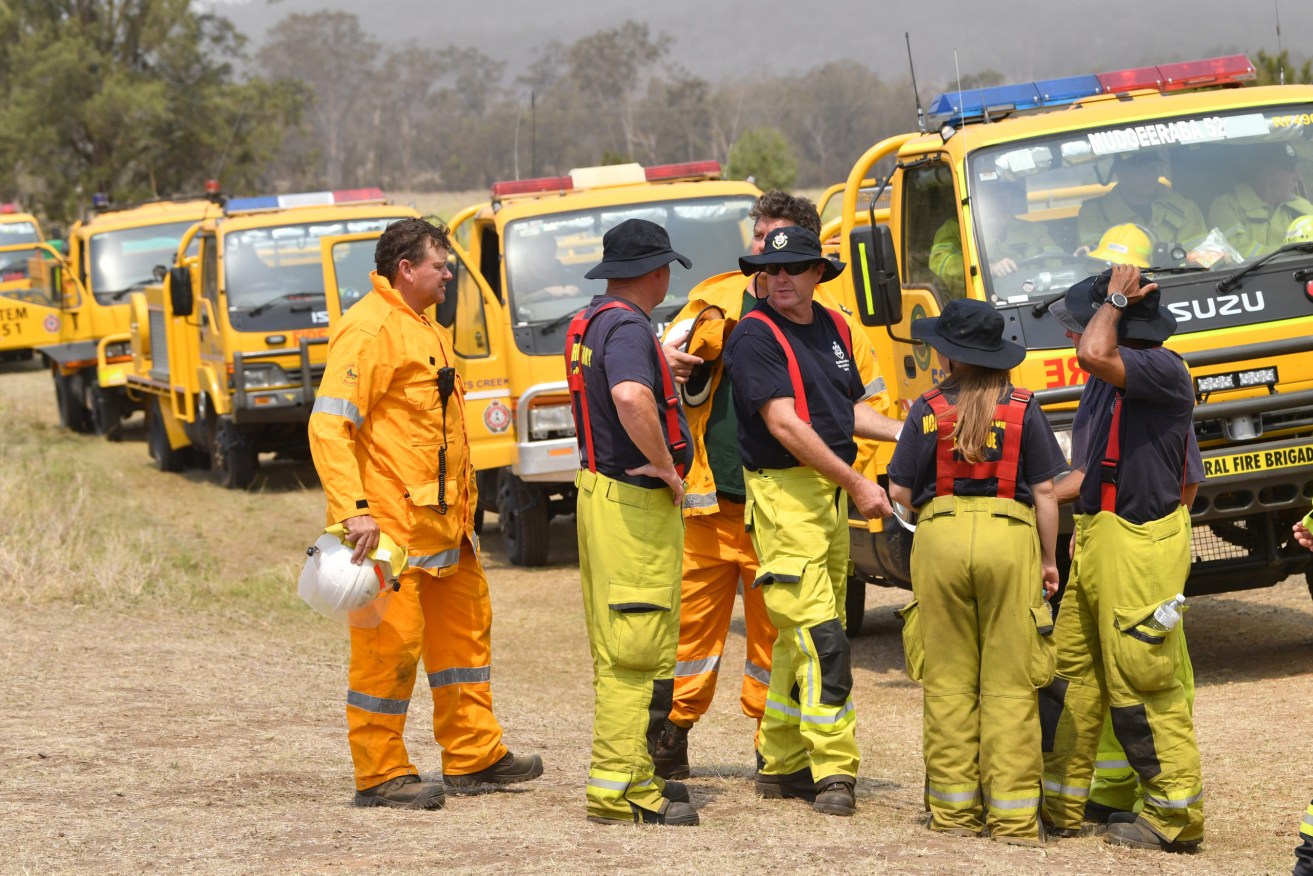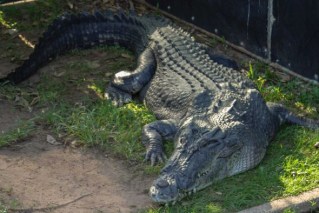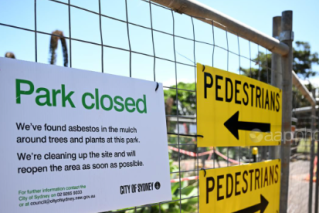Forests under fire: Black Summer recovery still in wilderness, says report
Queensland’s subtropical rainforest destroyed by the Black Summer bushfires can only recover with human intervention, a new report has found.


Rural firefighters are seen preparing to fight fires at Spicers Gap, south west of Brisbane, in November 2019 as bushfires began to rage out of control.. (AAP Image/Darren England)
Leaving some forest species to their own natural devices to recover from bushfires will invite invasive weeds such as lantana to take control. Failing to intervene will leave the landscape exposed to further harm that may prove irreparable, threatening the wider eco-system and the eco-tourism ventures that rely on the natural beauty of these World Heritage-listed areas.
The warning comes from Griffith University environmental scientist, Dr Patrick Norman, who has just finished satellite mapping the bushfires that razed large tracts of Queensland bushland and rainforest in 2019.
His assignment was part of the Bushfire Recovery Project, comprising a group of five scientists from Griffith and Australian National Universities following the 2019-20 Black Summer fires.
The natural disaster was Australia’s biggest inferno on record.
Initial assessments from the Federal Department of Agriculture, Water and Environment have identified 119 animal species at risk following the Black Summer fires including 17 birds, 20 mammals, 23 reptiles, 16 frogs, 22 crayfish, 16 freshwater fish species and five invertebrate species.
Forests under fire
Norman’s group has released a report this week, peer-reviewing the science focused on forest recovery after fire.
“Since the Black Summer fires happened, the conversation has kind of oscillated between ‘all doom and gloom’ and ‘everything will be fine’,” Norman said.
“It was our objective to explain the facts of what’s happening to forests during large-scale fires and the implications afterwards for Australian vegetation.”

Griffith University environmental scientist Dr Patrick Norman.
Queensland eucalypt forests and areas of coastal heath, like similar species in NSW and Victoria are faring well in their recovery without human help, Norman told InQueensland.
But subtropical rainforests, contained in areas throughout the Scenic Rim, such as the Darlington Range in the State’s south-east, could be in strife if significant and urgent rehabilitation work is not forthcoming.
The region was in the path of some of Queensland’s fiercest blazes that damaged property, including the popular eco-tourist resort Binna Burra.
“Most of the eco-systems impacted in the Black Summer fires can handle fire quite well, but there are species such as subtropical rainforest and some of the Ash forests in the Alps of southern Australia that just don’t do well and are at risk of being permanently wiped out,” he said.
“Unless they can get big enough after a fire has come through to withstand the next fire, they won’t have that time available to mature, drop seed and get established.
“The eucalypt forests around Binna Burra are re-greening fantastically and looking excellent, but it’s a stark comparison just across the ridge where the rainforest has been burnt, where only the hoop pines have survived and the undergrowth still hasn’t come back.
“We’re only talking about 100 or so hectares, but if you look across from Binna Burra, all you can now see are bare patches, where once there was thick and healthy tropical rainforest.
“Once that canopy has gone it invites lantana in pretty quickly, so we have to be on the front-foot now to monitor and manage this very carefully.”
Designed to burn
As the report’s findings confirm, the Australian bush is largely designed to burn, but subtropical rainforests are far less tolerant, especially if fires events occur too frequently in concert with below-average rainfall.
One of the key findings estimates some 70 per cent of plant species within eucalypt forests survive bushfire through use of “recovery buds” under their bark and in the ground, which store energy reserves and sprout new growth even when the entire tree has been burned.
Most of the remaining 30 per cent drop seed when burnt, a fire adaptation known as “seeding”.
While rainforests struggle in Queensland, other species such as some sub-alpine woodlands near the NSW-Victoria border are also ailing in the wake of the fires, according to the project’s investigating team.
Norman explained to InQueensland that some trees survive through use of “recovery buds”, which store energy reserves under their bark and in the ground and sprout new growth even when every leaf on the tree has been burned.

A satellite generated heat map showing the spread and intensity of fires in parts of Queensland.
Others shed large volumes of seed when their canopy is burned, creating a new generation of trees.
Other key findings of the expert review are:
- Australian forests have evolved to recover after bushfires because fire has been part of the Australian landscape for 60 million years.
- Most Australian Eucalyptus forest tree species are adapted to survive bushfires by either resprouting new growth using recovery buds, or dropping huge volumes of seed when their entire canopy is burned (seeding).
- The fact that most Eucalyptus tree species survive fire and recover quickly by resprouting maintains vital old trees with hollows in them as homes for native gliders, kookaburras, goannas, parrots and more.
- Survival of many Australian animal and bird species relies on unburnt patches of forest for them to live in while burnt forest recovers. Koalas can live off resprouting forest within months of a fire.
- If, for seeders, fire occurs before trees reach maturity and produce viable seed, and, for sprouters, their recovery buds are exhausted, then repeated mega-fires could change Australia’s forests.
‘Unstoppable force’
“In most fires, a good deal of the big trees survive and remain great habitat and homes for our iconic animals,” Norman said.
“Mammals such as sugar gliders and greater gliders often survive fires in their homes in tree hollows, and kookaburras, parrots and powerful owls can too.
“Other animals survive in unburned creeks and gullies as well as under bark, in wombat holes, under rocks and in hollow logs.
“For many of our iconic animals to survive after fire, we just need to leave the forest alone to recover.
“For example, koalas can live off re-sprouting forest within months of a fire passing through an area.”
Norman said the science demonstrated that once conditions for starting and sustaining fires reached a critical threshold, the Black Summer fire event was an “unstoppable force”.
“Long years of drought and above-average temperatures were the biggest factors,” he said.
“Once a fire gets moving it will use whatever fuel is available – no amount of back-burning beforehand will make a difference.”












